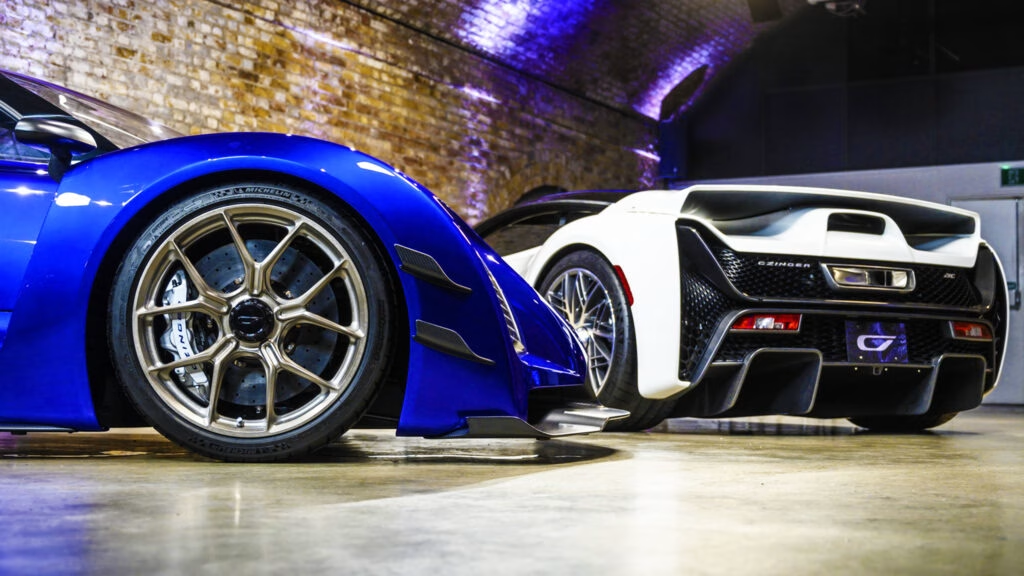Why Did Czinger Scrap Its Hyper GT and SUV Plans?
Czinger’s decision to walk away from its ambitious Hyper GT and 1,200-plus horsepower SUV projects raised more than a few eyebrows in the automotive world. After all, the company had already teased both models with the same 2.88-liter twin-turbo V8 found in its flagship 21C hypercar. So, what changed? According to Czinger’s new Chief Commercial Officer, George Biggs, the answer comes down to focus and sustainability. Chasing every market trend—especially the current gold rush for high-performance SUVs—can be a risky game for a boutique automaker. Instead, Czinger is doubling down on what it does best: pushing the boundaries of hypercar performance with the 21C.
This move might disappoint those hoping for a US-built rival to the Koenigsegg Gemera or Lamborghini Urus, but it’s a calculated choice. For a small manufacturer, spreading resources too thin can dilute brand identity and compromise quality. Biggs points out that the most successful luxury brands over the past 15 years have been those with a clear, unwavering vision. In Czinger’s case, that means sticking to its roots and refining the 21C into something truly extraordinary.
What Sets the Czinger 21C Apart From Other Hypercars?
The Czinger 21C isn’t just another fast car with a big engine. It’s a technological showcase, blending cutting-edge engineering with a design philosophy that’s as bold as it is functional. The car’s 2.88-liter twin-turbo V8, paired with electric motors, delivers a jaw-dropping 1,250 horsepower—enough to reclaim the Laguna Seca lap record from Koenigsegg in 2024. But it’s not just about raw numbers. The 21C’s unique jet fighter-inspired tandem seating, advanced aerodynamics, and extensive use of 3D-printed components make it a standout even in the rarefied world of hypercars.
Czinger’s approach is refreshingly different. Rather than chasing volume or mainstream appeal, the company is obsessed with innovation. For instance, the 21C’s chassis and suspension are designed using generative algorithms and manufactured with 3D printing, resulting in a structure that’s both lighter and stronger than traditional builds. This isn’t just marketing fluff—the results speak for themselves on the track.
Why Aren’t More Boutique Brands Building SUVs?
It’s tempting to look at the runaway success of models like the Lamborghini Urus or Ferrari Purosangue and wonder why every luxury automaker isn’t jumping on the SUV bandwagon. But for smaller brands like Czinger, Pagani, or Rimac, the equation is different. Building a high-performance SUV isn’t just about dropping a big engine into a taller body. It requires massive investments in engineering, safety, and emissions compliance—not to mention the challenge of maintaining exclusivity and brand cachet.
Take Bugatti, for example. Despite persistent rumors, the French marque has resisted calls to build an SUV, choosing instead to focus on its core hypercar lineup. Koenigsegg’s Gemera is a rare exception, but even then, the Swedish brand remains laser-focused on two-seat hypercars. For Czinger, the lesson is clear: stick to what you do best, and do it better than anyone else.
How Will the 21C Evolve Over the Next Decade?
With the Hyper GT and SUV projects shelved, Czinger is channeling all its energy into evolving the 21C. The company has hinted at several possible updates, including new seating configurations that move away from the current jet fighter layout, as well as even higher-performance variants that could eclipse the already formidable 21C V-Max. The goal? To keep the 21C fresh, relevant, and at the cutting edge of hypercar technology well into the 2030s.
This strategy isn’t just about keeping up with the competition. It’s about building a legacy. By focusing on continuous improvement rather than chasing fleeting trends, Czinger is positioning the 21C to become a modern classic—one that could remain in production long after other hypercars have faded into obscurity.
What Does This Mean for Hypercar Enthusiasts and Collectors?
For those lucky enough to be in the market for a hypercar, Czinger’s renewed focus on the 21C is good news. Instead of spreading itself thin, the company is pouring its resources into making the 21C even more special. Expect more limited editions, bespoke options, and technical upgrades that push the envelope of what’s possible. And with only a handful of these cars ever likely to be built, exclusivity is all but guaranteed.
From a collector’s perspective, the 21C’s story is just beginning. As the car continues to evolve, early examples could become highly sought-after, especially if Czinger delivers on its promise of continuous innovation. The hypercar market is notoriously fickle, but one thing’s for sure: the 21C is a car that demands attention—and rewards those who appreciate true engineering artistry.
The Big Takeaway
Czinger’s pivot isn’t about playing it safe—it’s about making smarter, more focused moves in a crowded market. For hypercar fans, that means more innovation, more excitement, and a 21C that just keeps getting better. Start paying attention to the details now, and you’ll likely see the difference by the time the next big reveal rolls around.

